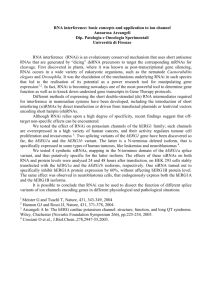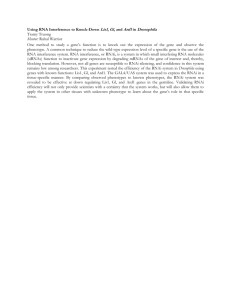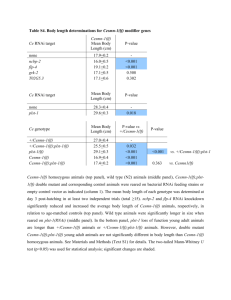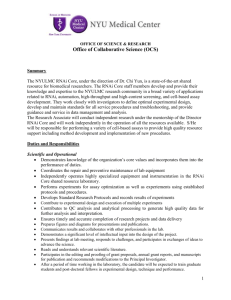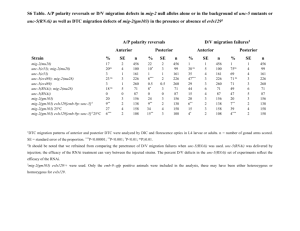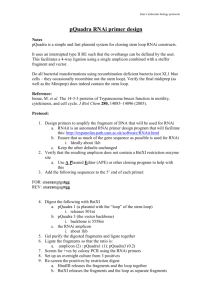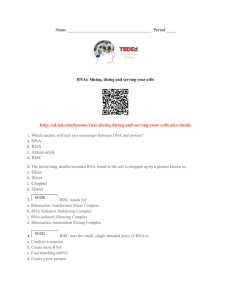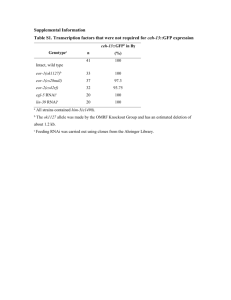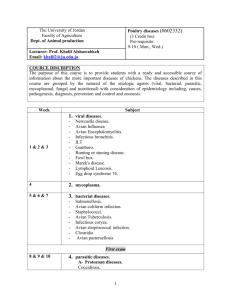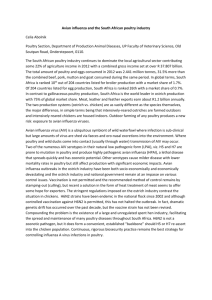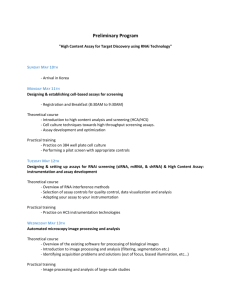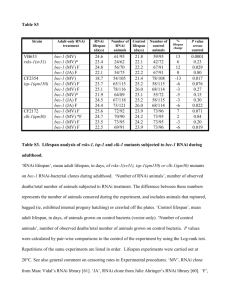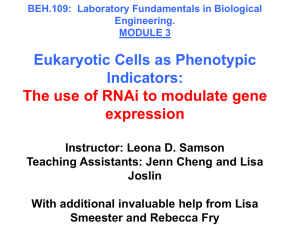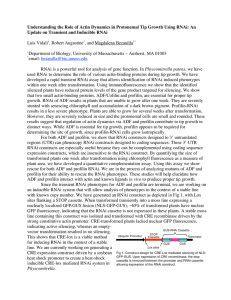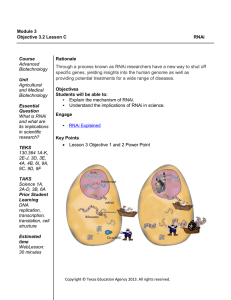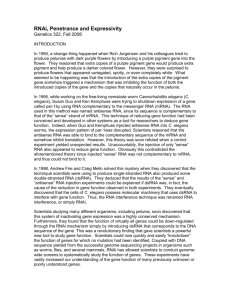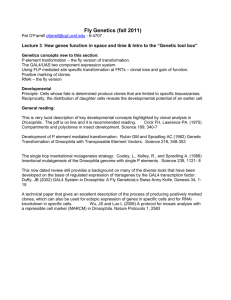to modulate production traits & develop disease resistance
advertisement
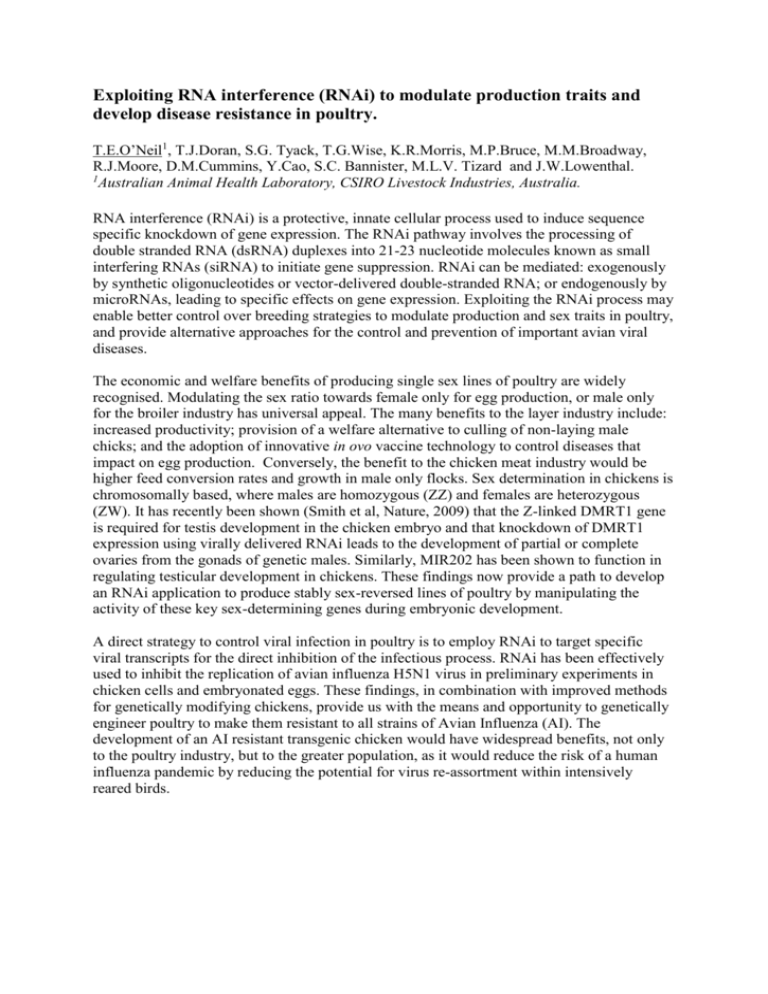
Exploiting RNA interference (RNAi) to modulate production traits and develop disease resistance in poultry. T.E.O’Neil1, T.J.Doran, S.G. Tyack, T.G.Wise, K.R.Morris, M.P.Bruce, M.M.Broadway, R.J.Moore, D.M.Cummins, Y.Cao, S.C. Bannister, M.L.V. Tizard and J.W.Lowenthal. 1 Australian Animal Health Laboratory, CSIRO Livestock Industries, Australia. RNA interference (RNAi) is a protective, innate cellular process used to induce sequence specific knockdown of gene expression. The RNAi pathway involves the processing of double stranded RNA (dsRNA) duplexes into 21-23 nucleotide molecules known as small interfering RNAs (siRNA) to initiate gene suppression. RNAi can be mediated: exogenously by synthetic oligonucleotides or vector-delivered double-stranded RNA; or endogenously by microRNAs, leading to specific effects on gene expression. Exploiting the RNAi process may enable better control over breeding strategies to modulate production and sex traits in poultry, and provide alternative approaches for the control and prevention of important avian viral diseases. The economic and welfare benefits of producing single sex lines of poultry are widely recognised. Modulating the sex ratio towards female only for egg production, or male only for the broiler industry has universal appeal. The many benefits to the layer industry include: increased productivity; provision of a welfare alternative to culling of non-laying male chicks; and the adoption of innovative in ovo vaccine technology to control diseases that impact on egg production. Conversely, the benefit to the chicken meat industry would be higher feed conversion rates and growth in male only flocks. Sex determination in chickens is chromosomally based, where males are homozygous (ZZ) and females are heterozygous (ZW). It has recently been shown (Smith et al, Nature, 2009) that the Z-linked DMRT1 gene is required for testis development in the chicken embryo and that knockdown of DMRT1 expression using virally delivered RNAi leads to the development of partial or complete ovaries from the gonads of genetic males. Similarly, MIR202 has been shown to function in regulating testicular development in chickens. These findings now provide a path to develop an RNAi application to produce stably sex-reversed lines of poultry by manipulating the activity of these key sex-determining genes during embryonic development. A direct strategy to control viral infection in poultry is to employ RNAi to target specific viral transcripts for the direct inhibition of the infectious process. RNAi has been effectively used to inhibit the replication of avian influenza H5N1 virus in preliminary experiments in chicken cells and embryonated eggs. These findings, in combination with improved methods for genetically modifying chickens, provide us with the means and opportunity to genetically engineer poultry to make them resistant to all strains of Avian Influenza (AI). The development of an AI resistant transgenic chicken would have widespread benefits, not only to the poultry industry, but to the greater population, as it would reduce the risk of a human influenza pandemic by reducing the potential for virus re-assortment within intensively reared birds.
